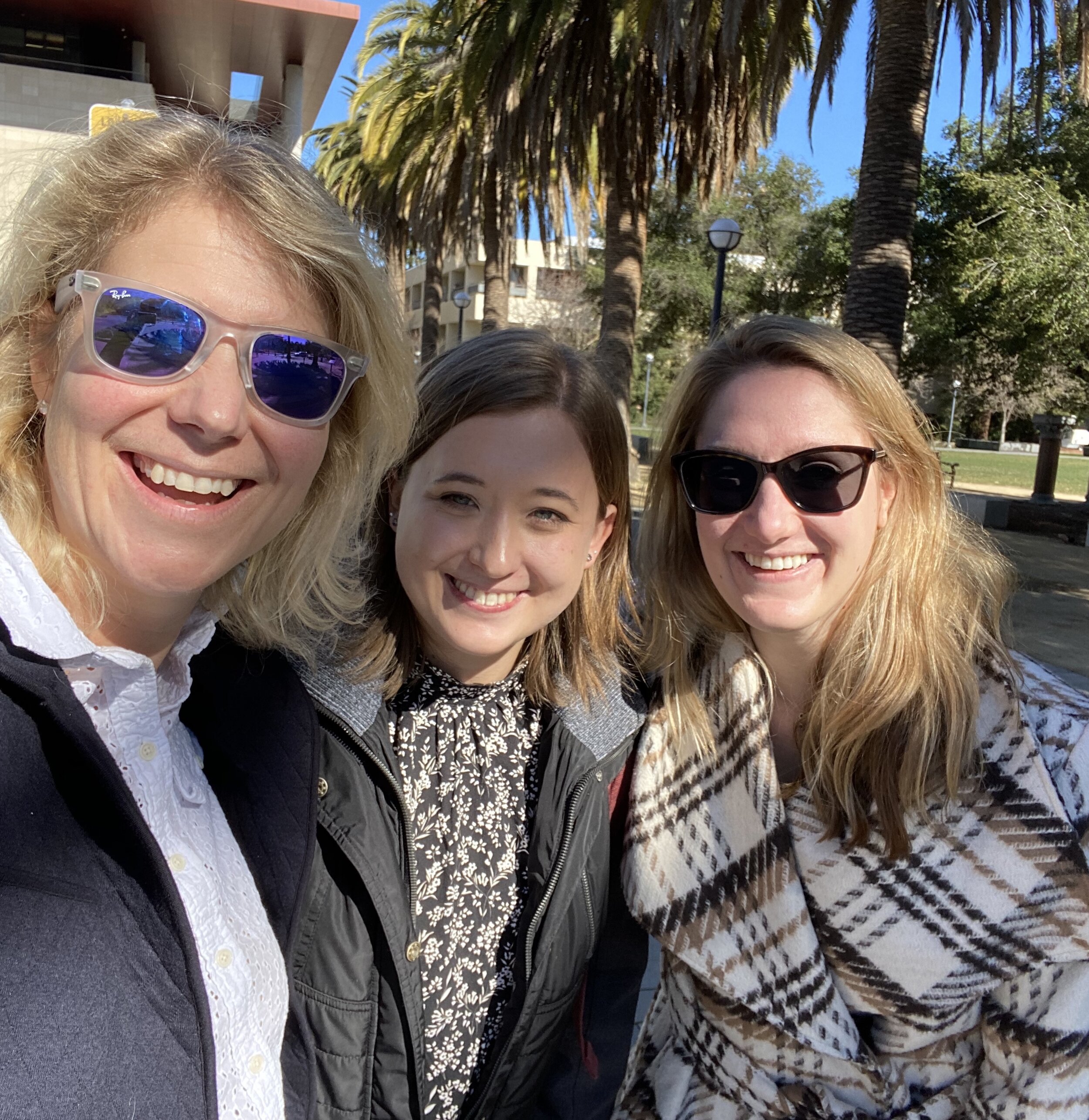SDRC Member Spotlight: Dr. Anna Gloyn
Dr. Anna Gloyn (left) with graduate student Antje Grotz (center) and postdoctoral researcher, Dr. Nicole Krentz
Stanford Diabetes Research Center is thrilled to welcome its newest member Professor Anna Gloyn who recently joined the Department of Pediatrics - Endocrinology and Diabetes at Stanford. Dr. Gloyn moved to Stanford after 15 years as a faculty member at the University of Oxford, UK and has long been deeply committed to understanding how genetics impacts insulin-producing pancreatic beta-cell function and influences diabetes. She envisions that this knowledge is valuable and, in some cases essential for developing precision medicine approaches to treat diabetes.
Dr. Gloyn’s goal of using genetics as a tool to understand and treat diabetes began with her interest in diabetes as an undergraduate. “I was totally fascinated by the impact the loss of one hormone could have, metabolically”, she says. Her graduate and postdoctoral research focused on the genetic basis of diabetes leading to the discovery of mutations responsible for causing neonatal diabetes, findings that paved the way for superior treatment strategies that targeted the functional impact of the mutation.
Although genetics play an important role in the development and progression of diabetes, Dr. Gloyn is quick to acknowledge the inherent complexity of the disease in terms of its causes. “Our genetics haven’t changed over the last 20-30 years, so the increase in type 2 diabetes that we’re seeing globally has to be attributed to changes in our environment. But what’s important to understand is that genetics is a solid place to start in terms of identifying causal dysfunctional pathways in diabetes which potentially can be targeted therapeutically”, she notes.
Dr. Gloyn is excited about the potential for using the data mined from genetic studies to help develop personalized and integrated approaches to diabetes risk assessment, treatment and prognosis. “There’s a lot of interest in the field to use data that has emerged from global genetic studies to develop risk scores for people in the population that are at a higher risk for developing a specific trait. If you look at 23andMe, they’ve been aggregating data for some time now and are developing their own genetic risk scores based on the genetic data they have collected”, she says. Dr. Gloyn notes recent contributions of prominent researchers in the US and UK, including Dr. Jose Florez and Dr. Miriam Udler (Boston) and Dr. Mark McCarthy and Dr. Anubha Mahajan (Oxford) in assessing whether more effective therapeutic interventions could be devised based on process specific genetic risk scores. She cautions, however, that while this approach is very robust, it likely won’t replace more traditional sources of information such as age and BMI. “Rather,”, she says, “genetics might tell us more about the type of diabetes someone might develop and what drugs they might respond to”.
Speaking of her own recent work on the Zinc transporter gene SLC30A8 in collaboration with colleagues at Helsinki University, where they uncovered rare loss of function mutations which protect against the development of diabetes in a subset of Western Finlanders, she explains that this discovery provided a critical information for efforts to target the zinc transporter therapeutically. “Pharmaceutical companies became interested in SLC30A8 as a target following the discovery of a common coding variant associated with diabetes risk, but it was unclear from rodent and cellular studies whether it was a loss or a gain of function that was associated with diabetes risk. Human genetics has been absolutely crucial in helping them figure out the type of therapeutic agent, agonist or antagonist, that they should focus on developing”.
Asked about the biggest challenge facing the development of precision medicine strategies to treat diabetes, Dr. Gloyn says, “Genetic studies have received substantial funding and resources in recent years coupled with considerable hype about what genetics will deliver. For some progress has been disappointingly slow and as a community we have not achieved the goals we set ourselves. This criticism is understandable but, in my opinion, harsh, considering how long it can take for basic science discoveries to have translational impact. The onus is on the research community to translate the substantial investments in genetics and new knowledge we have generated into improvements in healthcare.”
Dr. Gloyn is delighted about joining the SDRC community at Stanford, saying, “I’m excited about the opportunity to interact and collaborate with scientists who have been approaching diabetes research in similar but not identical ways. I’m really impressed by the diversity of work that’s happening across the campus”. Speaking about the recent “Ageotypes” study (featured in the current edition of the SDRC newsletter) from SDRC member Dr. Snyder’s group, for instance, she says, “It would be interesting to talk to Dr. Snyder’s team about potentially using process specific genetic risk scores to help stratify and identify the types of individuals that he has been studying in his wonderfully complex and innovative study”.
Dr. Gloyn’s team at Stanford includes postdoctoral researcher Dr. Nicole Krentz, and a visiting final year PhD student, Antje Grotz. Dr. Krentz who also relocated from Oxford with Dr. Gloyn recently published a review describing pancreatic beta-cell dysfunction resulting from type 2 diabetes genetics. Antje, a recipient of the Albert Renold traveling fellowship from the European Association for the study of diabetes (EAFSD) is working with SDRC director, Dr. Seung Kim’s group at Stanford.
By
Harini Chakravarthy
Harini Chakravarthy is a science writer for the Stanford Diabetes Research Center.

